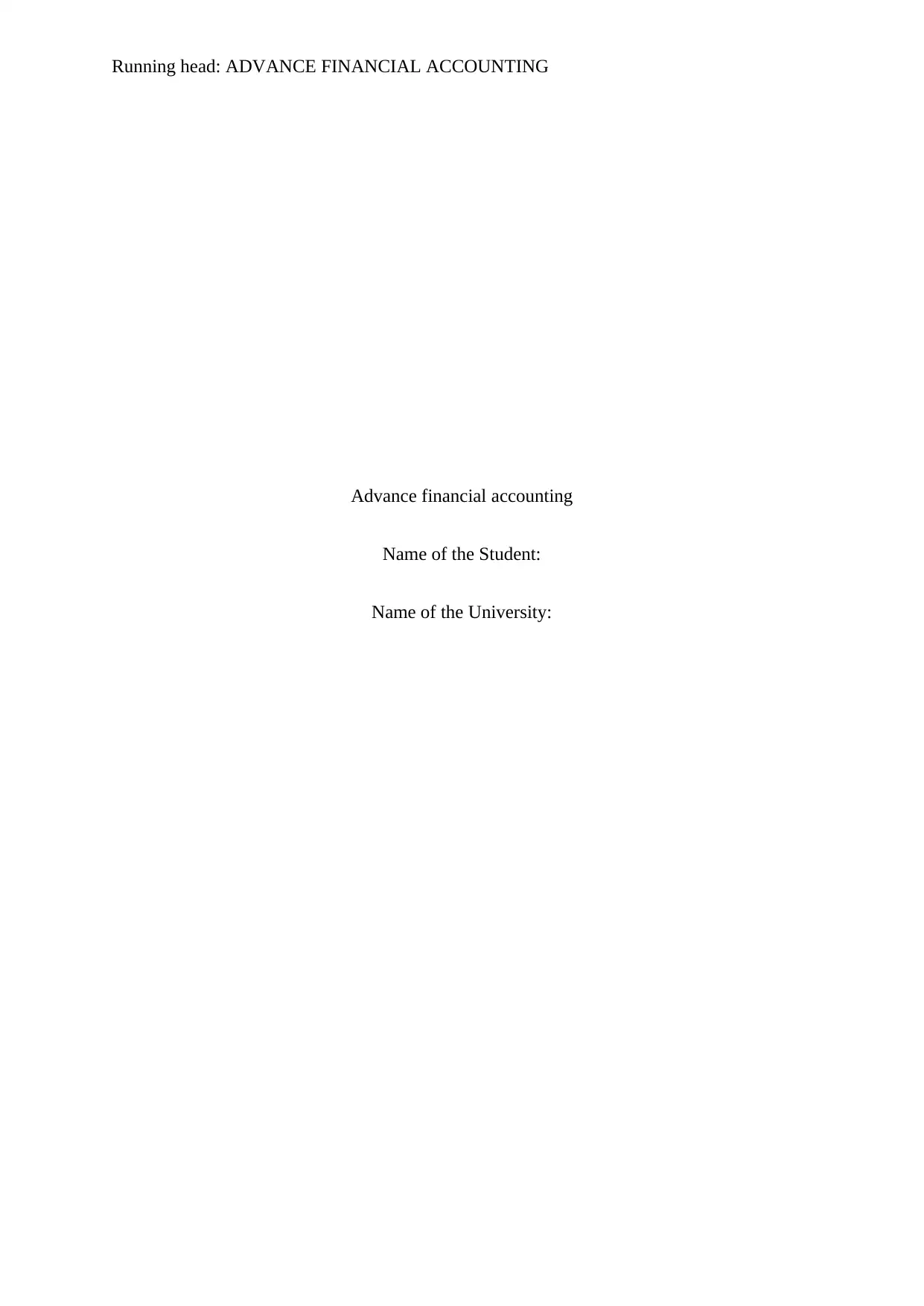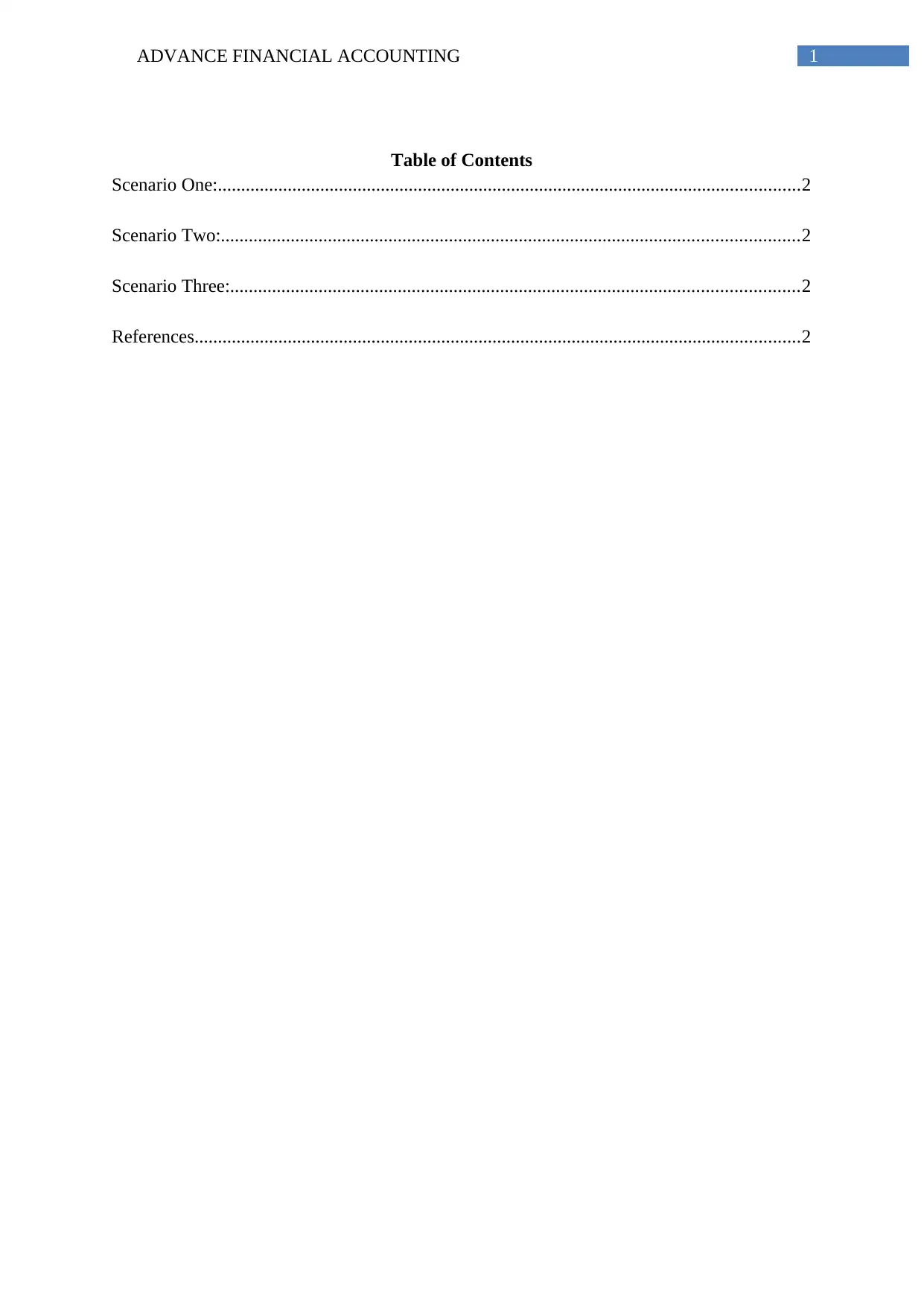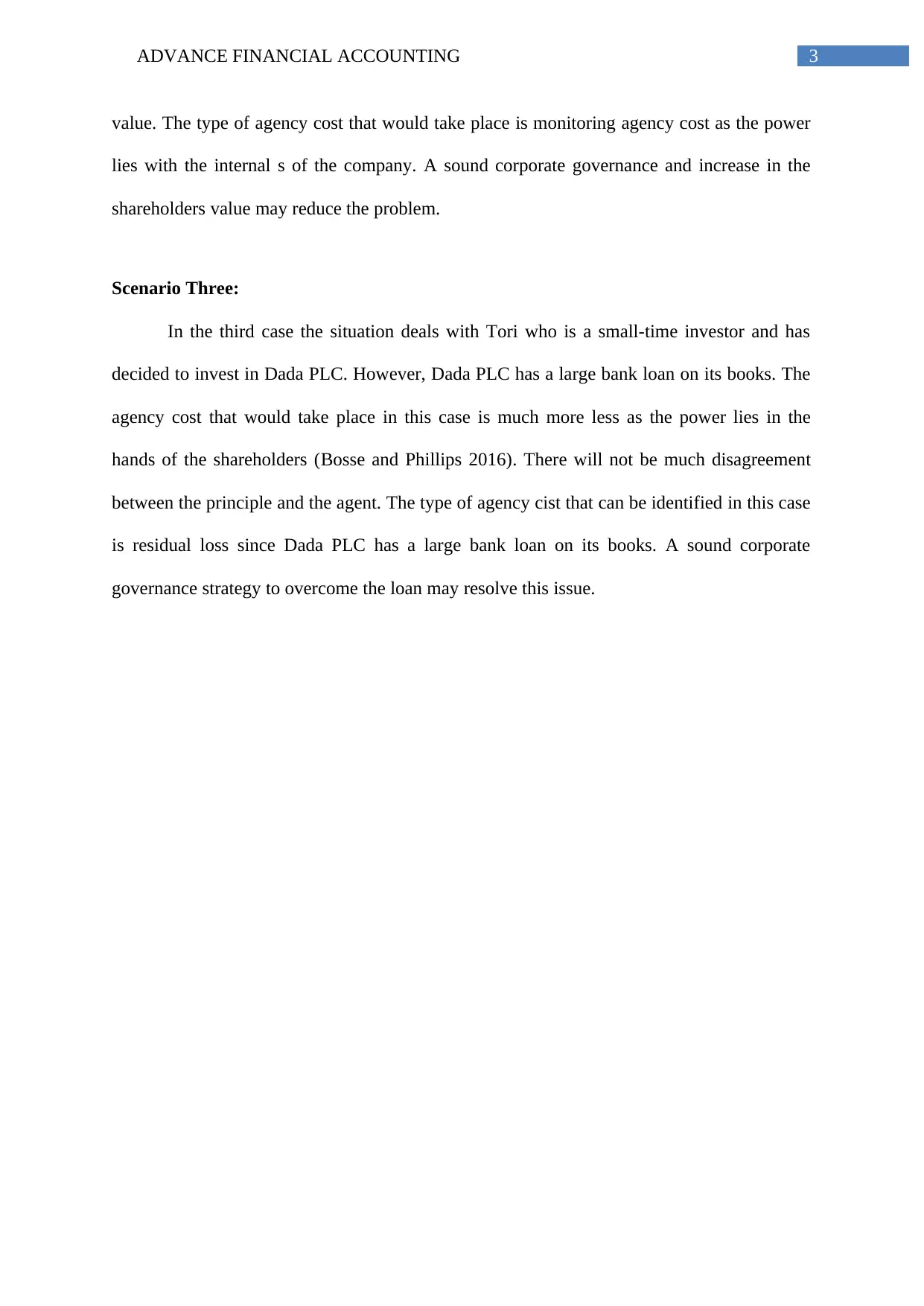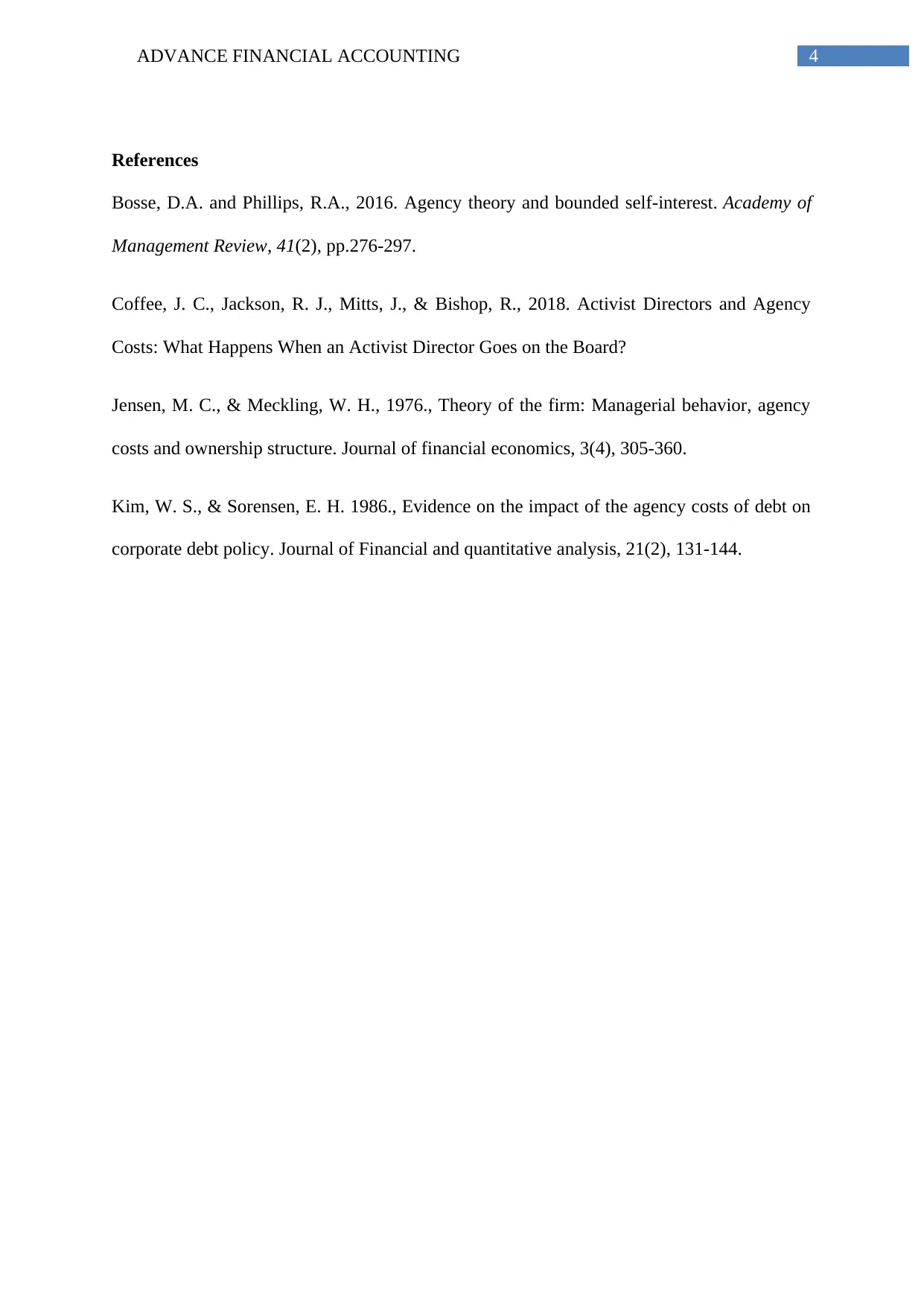Agency Cost Analysis: Advanced Financial Accounting Perspectives
VerifiedAdded on 2023/06/11
|5
|721
|65
Essay
AI Summary
This essay delves into the concept of agency costs as described by Jensen and Meckling (1976), which arise from the separation of ownership and control in organizations. It examines scenarios involving ABC Ltd, where a change in shareholding affects agency costs, and analyzes the implications for prospective investors. The essay also discusses Michael Bloomberg's investment decision and the agency costs associated with investing in a firm with numerous shareholders, highlighting the potential for management to overpower shareholders. Furthermore, it explores the case of Tori's investment in Dada PLC, a company with significant debt, identifying residual loss as a key agency cost. The essay references relevant literature, including Coffee, Jackson, Mitts, and Bishop (2018) and Kim and Sorenson (1986), to provide a comprehensive understanding of agency costs in various financial contexts.
1 out of 5









![[object Object]](/_next/static/media/star-bottom.7253800d.svg)